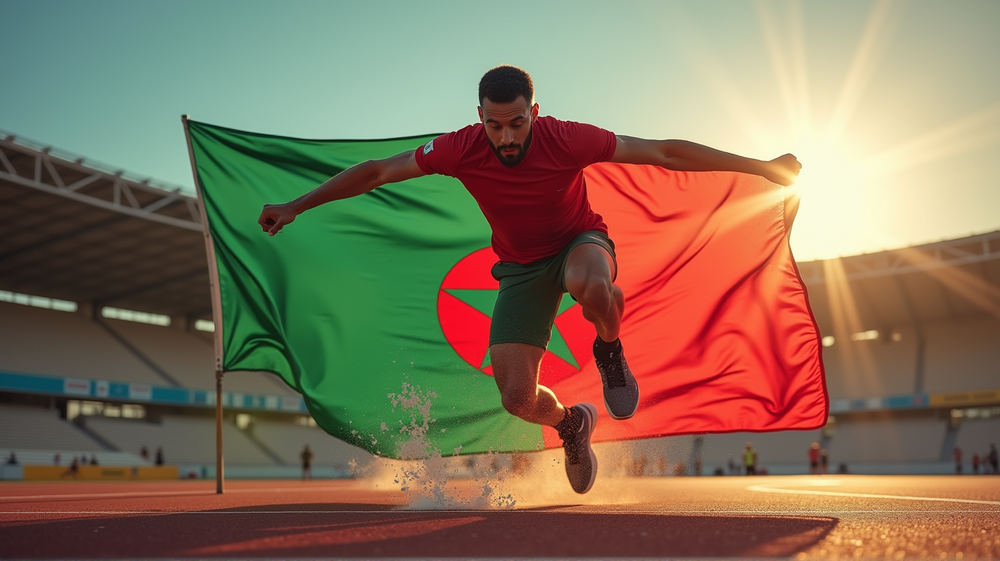Rhizlane Siba’s journey to becoming Morocco’s top high jumper is a tale of chance meetings and unwavering determination. As a ten-year-old, she first encountered the sport quite unexpectedly. During a routine day at her primary school in Rabat, a simple game set up by her teacher had students attempting to jump over a rope suspended between two poles. This seemingly insignificant event would indeed change the course of her life forever.
A Chance Encounter
Imagine standing in the schoolyard, hearing the voices of playful children echoing around as Siba first discovered her innate talent. “We jumped from the ground to the ground, scissoring the rope and landing on our feet,” she recalls. That remarkable moment when a young girl jumped higher than her peers would propel her toward new heights—literally—at the Stadium Moulay Abdellah in Rabat.
According to Morocco World News, this pivotal moment wasn’t just a personal milestone but also a significant chapter in Moroccan athletics. Siba quickly ascended to represent Morocco on the national team, breaking records across youth, junior, and senior levels along the way.
Pioneering Recognitions
Siba’s accomplishments are grand and historic. Her most cherished victory came during the 2014 African Senior Championships in Marrakech, where she clinched Morocco’s sole gold medal, standing proud as the national anthem was played. Earlier, in 2013, she had become the first Moroccan high jumper to clinch a medal at the Youth World Championships in Ukraine.
But amid the applause and accolades, she has had to battle for visibility in a country where high jump is overshadowed by an enviable legacy of track and field successes.
Championing Change
Despite her multitude of accolades, Siba is vocal about the lack of support for high jumpers in Morocco. “There’s no infrastructure or system that pushes athletes in technical events,” she observes. Her time at Kansas State University in the United States opened her eyes to the transformative potential of structured support and athletics.
Indeed, the five years spent in Kansas were not just about perfecting her technique but also about understanding the importance of investment in athletes. “Student-athletes in the United States are treated better than professional athletes back home,” she remarks, emphasizing the need for nutrition guidance, injury prevention, and academic support.
Breaking the Mold
Upon her return to Morocco, Siba has been advocating for a paradigm shift in how athletes are prepared and trained. She champions the integration of scientific methods, like data collection and performance tracking—a forward-thinking approach that she believes can yield measurable success.
Moreover, she is a firm believer in balancing discipline with talent. “An ambitious athlete who trains one day and skips the next will never improve,” she asserts. Her own family’s unwavering support forms the bedrock of her athletic pursuit, a testament to the immense role discipline plays in her life.
High Hopes
Despite the imbalances in support and visibility, Siba continues to be a flagbearer not just for Morocco in international competitions, but also as a beacon of change at home. Just this June, she represented Morocco as a Youth Olympic Ambassador in Greece, exploring how AI could revolutionize athletic performance.
As Siba continues her relentless quest to become the first Moroccan high jumper to qualify for the Olympics, she embodies a vision greater than personal achievement. Her dreams are intertwined with the goal of placing high jump prominently in Morocco’s sporting story—a tale that began with a child’s leap over a playground rope.
Let’s support athletes like Rhizlane Siba who pave new paths against the odds and push boundaries to ensure that every leap forward is recognized and celebrated.












